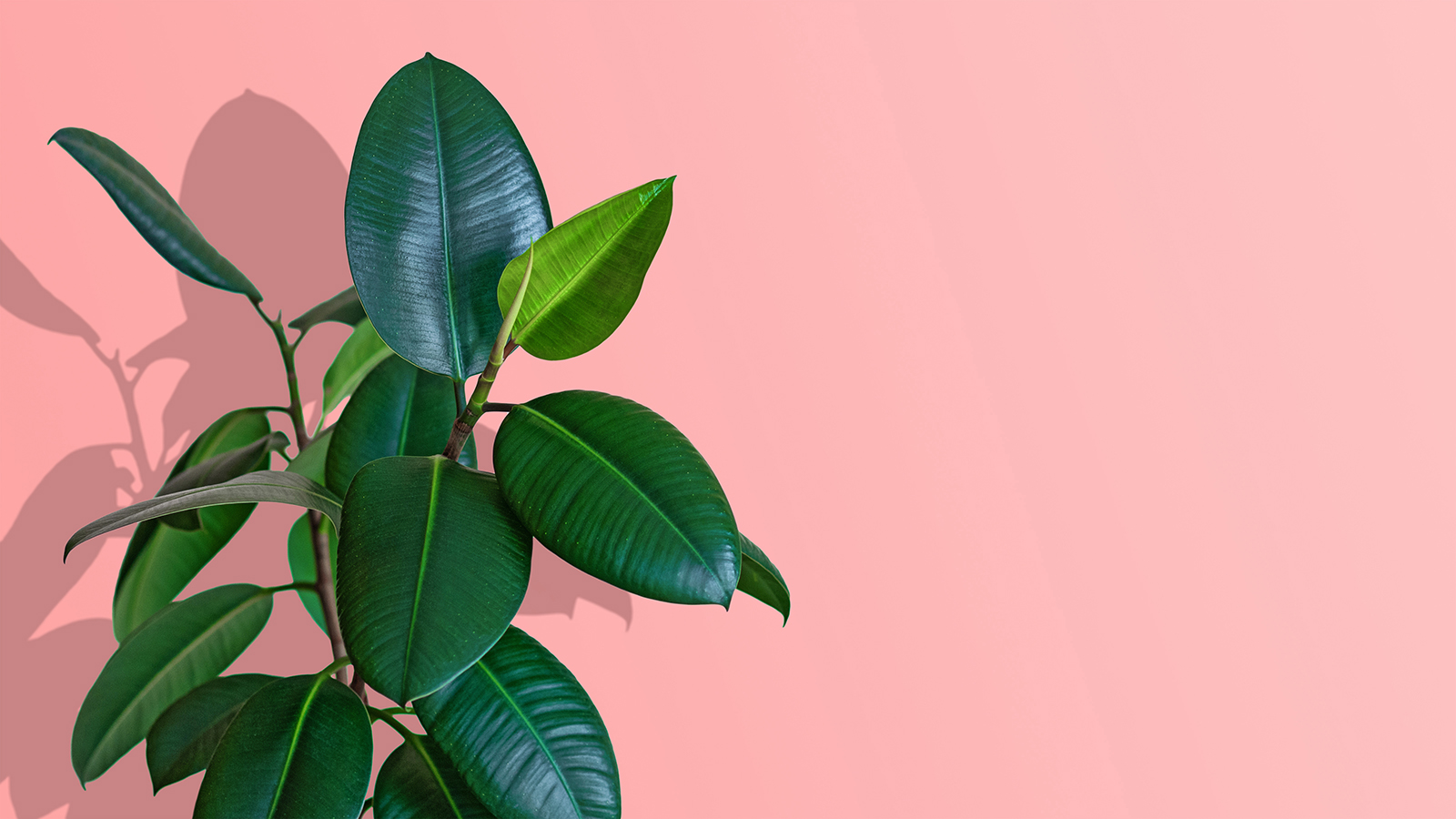
If you like large houseplants with big, bold leaves be sure to include a rubber plant in your mix. If you position them in their happy place (bright conditions but not in direct sunlight) they will grow rapidly into eye-catching specimens. They make a real statement grouped together on a table or plant stand, and will steal the spotlight in any houseplant display.
Also known as Ficus elastica, the rubber plant is a member of the fig family and gets its common name from the fact its leaves are thick and pliant, not because it produces rubber.
The large glossy leaves have a tropical feel, which is no surprise as it originates from Asia, specifically India, Malaysia and Java. In the wild the rubber plant grows into a large ornamental tree.
There are a few key things to know about rubber plant care, and from then on it will be plain sailing, as it’s pretty perfect in terms of being one of the best indoor plants you can choose.
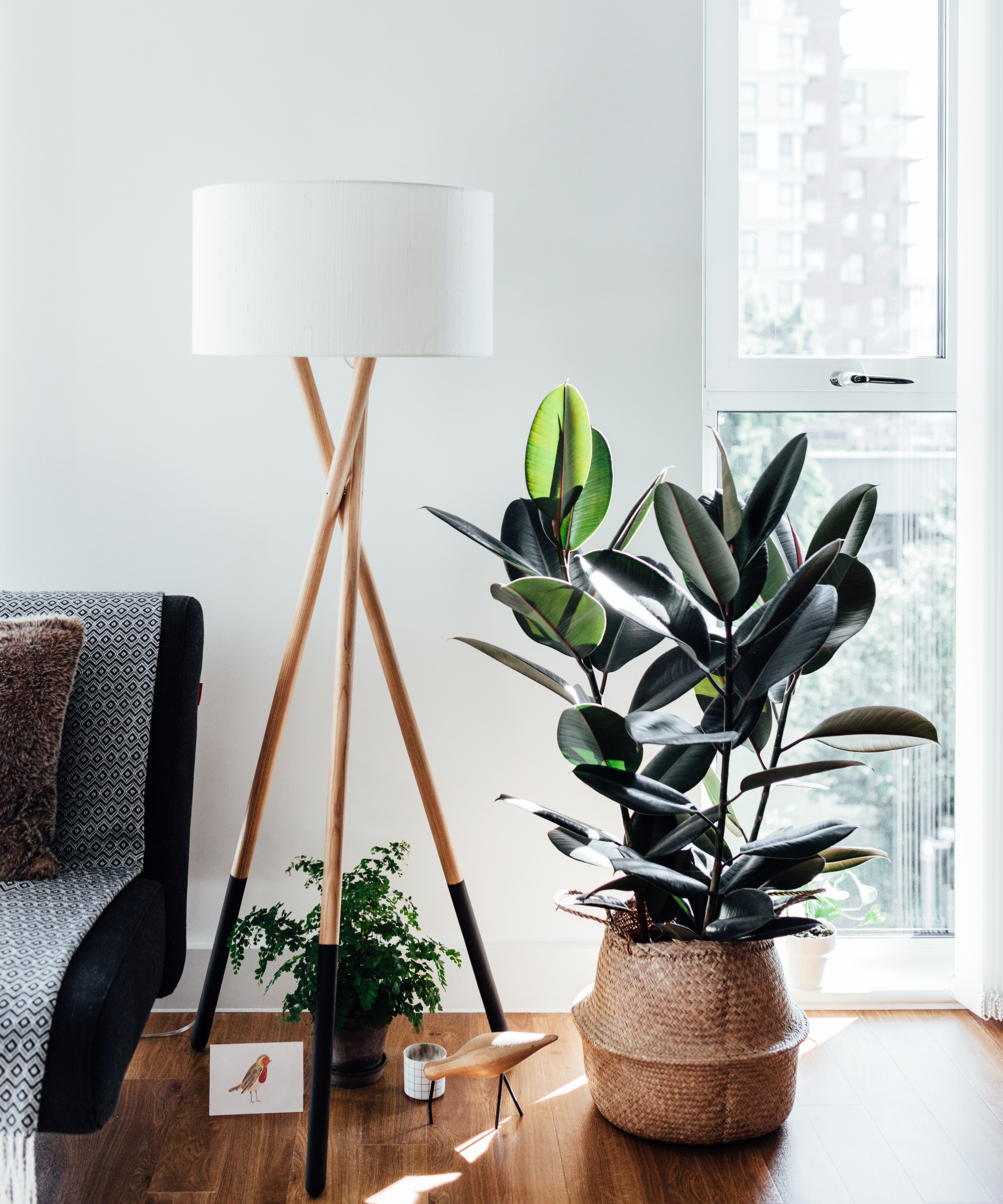
Top tips for rubber plant care
Part of the rubber plant's popularity is down to it being one of the best low maintenance indoor plants, plus of course its glossy good looks.
'Under the right conditions your rubber plants will be reliable additions to your plant displays. Yet they're bold enough to be the only plant in a room, says Teresa Conway, deputy gardens editor at Homes & Gardens.
We've rounded up all the rubber plant info you need so that this houseplant favorite will really shine as the focal point of your indoor garden.
Shop rubber plants online
A more compact alternative to the Ficus elastica, this mini version will have similar care needs.
1. Choose the right spot for a rubber plant
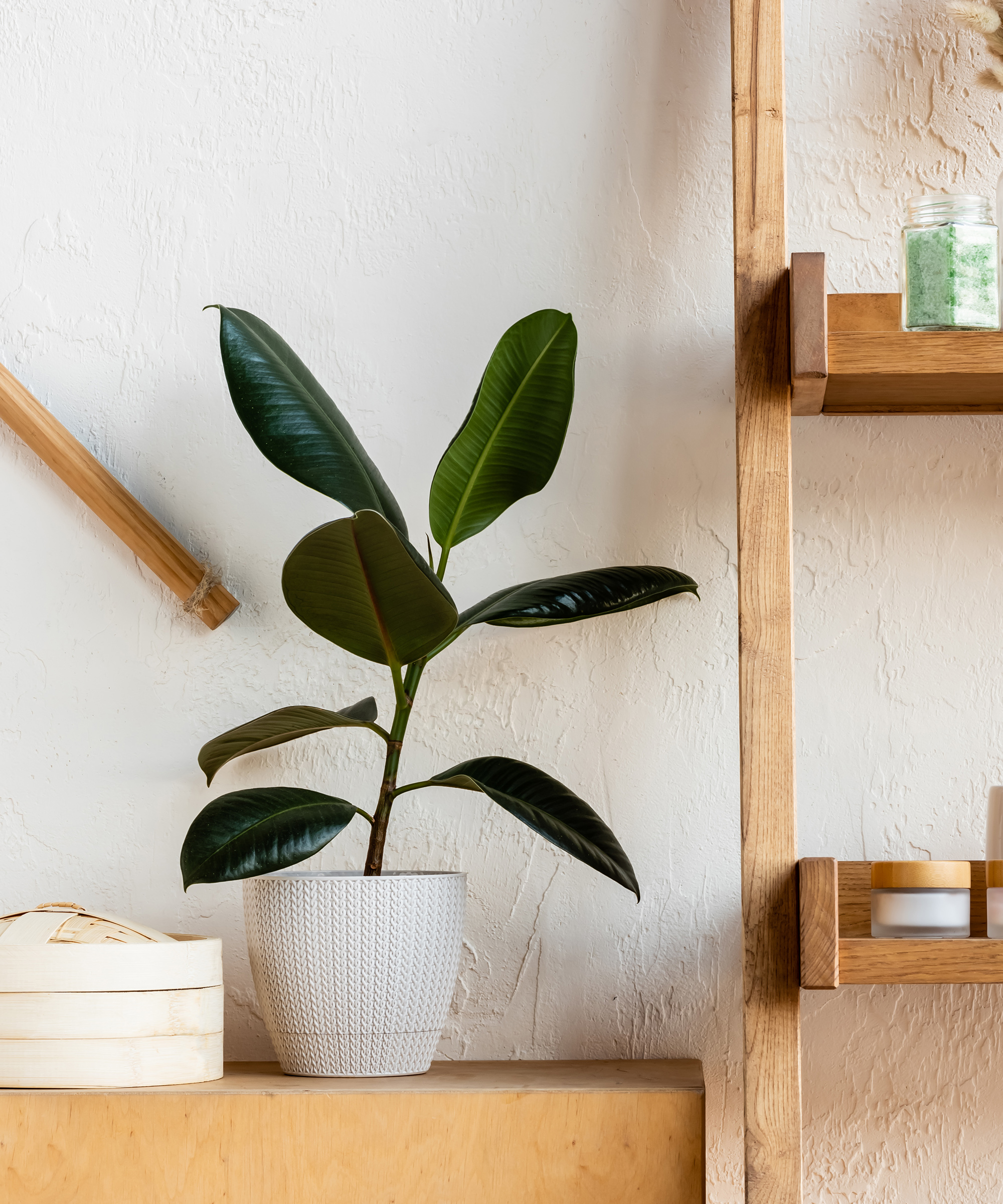
Finding your rubber plant's happy place is important if you want it to thrive. 'Keeping a consistent temperature is optimum for a rubber plant, so avoid drafty spots and areas near radiators or air conditioning units,' says Teresa.
Be wary of any room that has bright sunlight, indirect light is ideal. If you're placing it in a south-facing room then you'll need to have thin drapes on your window to stop the leaves from scorching.
If your home has lots of shady spots, there are plenty of low light indoor plants to choose from too.
2. Look after the leaves of your rubber plant
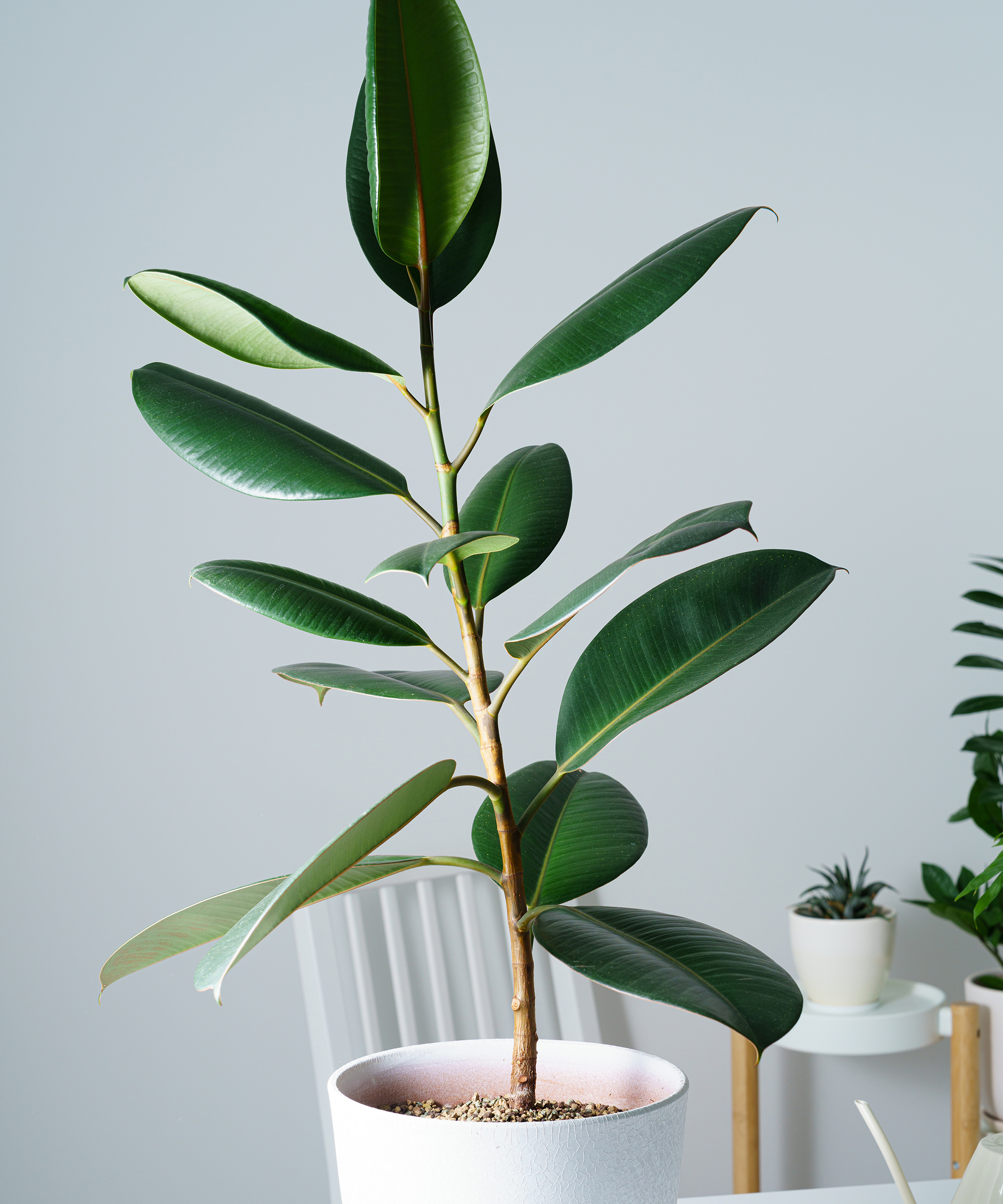
The leaves of a rubber plant are perhaps its biggest attraction. Mist them regularly to replicate the native jungle-like environment it thrives in and it will return the favor with lots of lush leaves, just like the peace lily plant.
This love of humid conditions means that rubber plants are one of the best plants for bathrooms too.
If the leaves start to drop off it could indicate your rubber plant is suffering from low humidity levels. So mist more frequently or place your plant pot on a tray of pebbles and water.
'To keep the leaves glossy, wipe them down regularly with a damp cloth. This frees the pores and removes any dust,' says Teresa.
3. Don't overwater a rubber plant
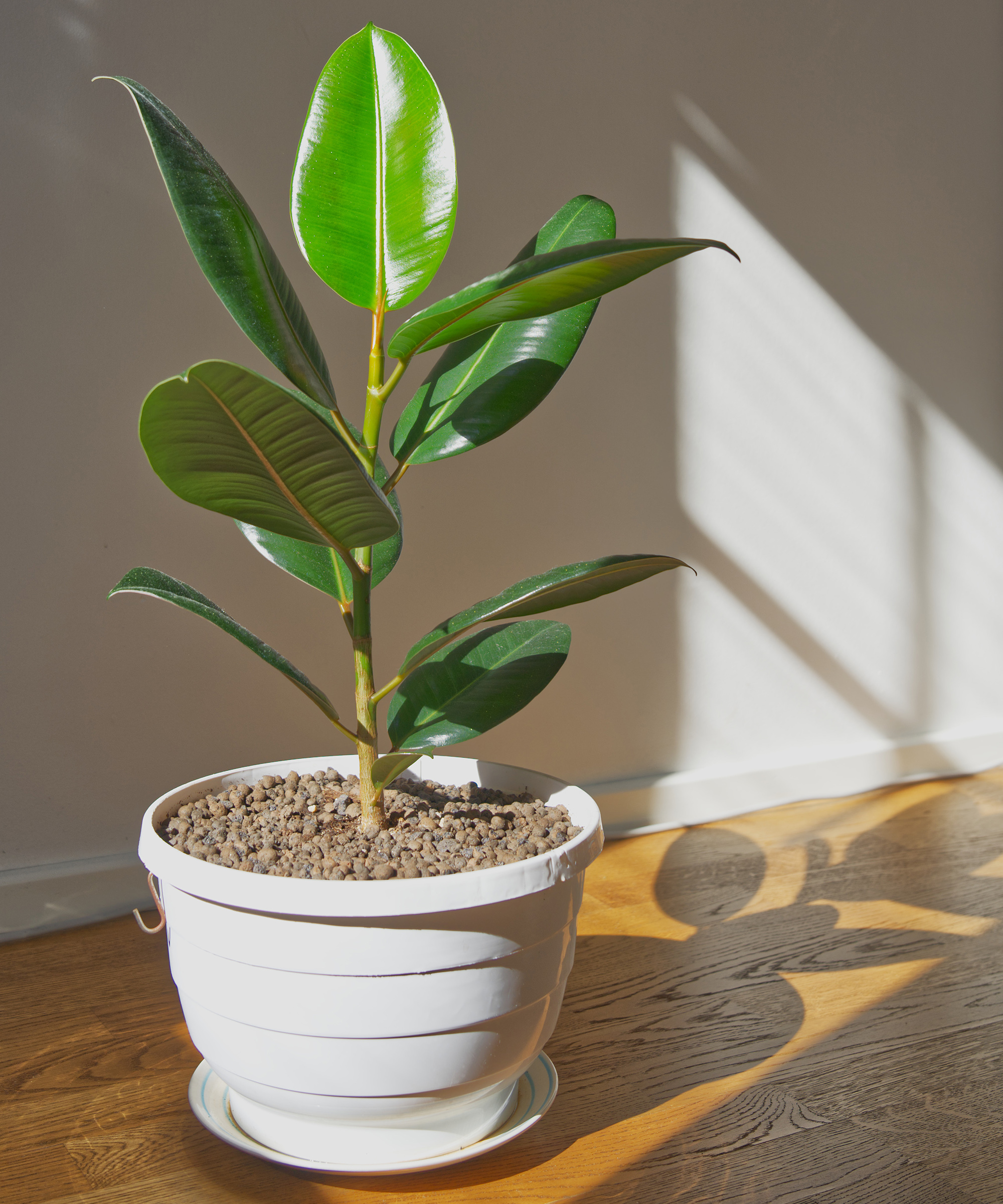
Aim to keep the soil moist but not soggy. Overwatering is a common problem with many indoor plants from Christmas cacti to orchids. Rubber plants often fall prey to this too.
When it comes to how often to water, here's some easy to remember advice. Weekly waterings all year round, except for in winter where you can water fortnightly.
If you are overwatering your rubber plant it will soon show in the form of brown leaves. Just like caring for a prayer plant, ensure your rubber plant pot has adequate drainage so your plant isn't left sitting in water.
4. Provide them with feed
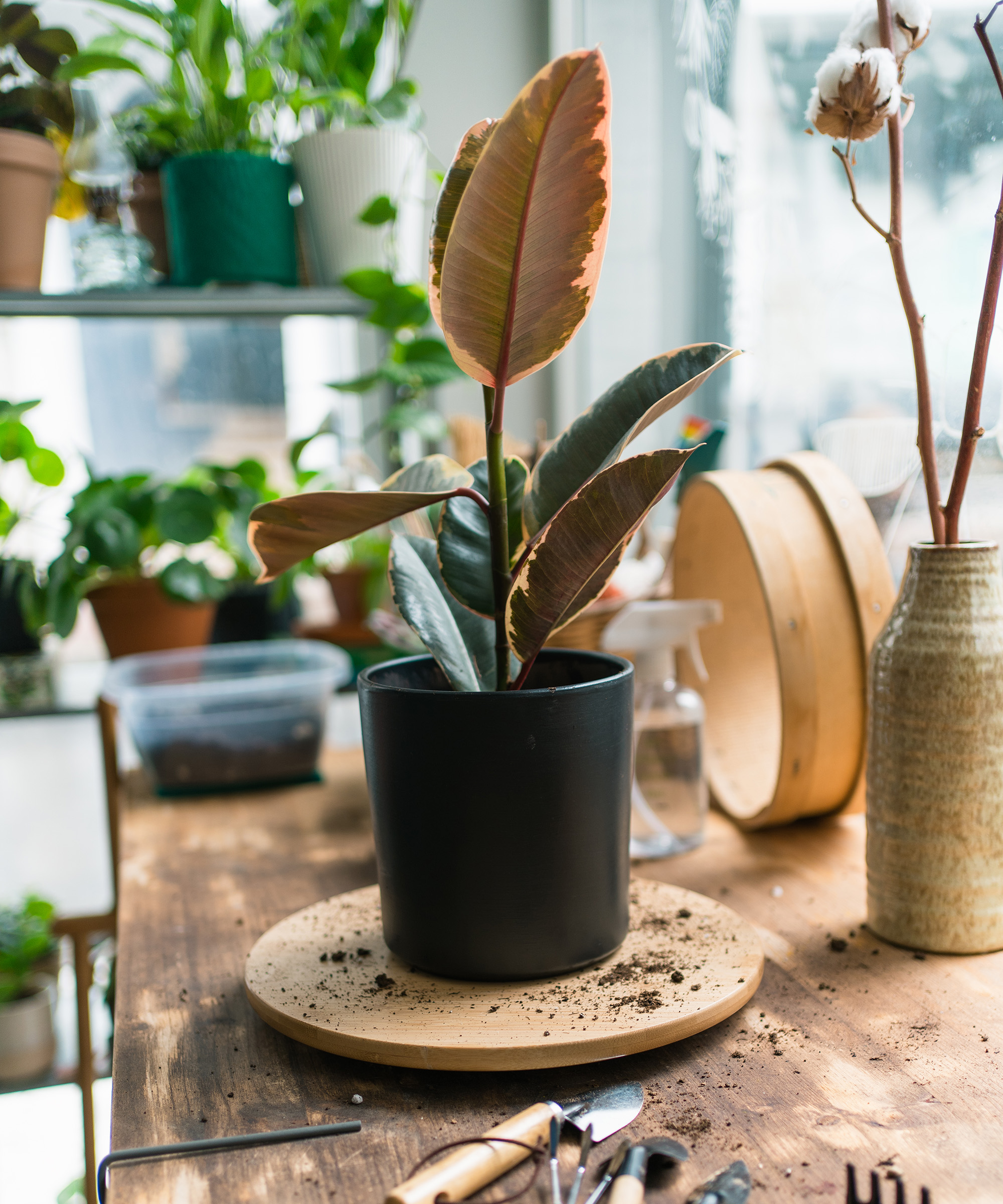
New rubber plants usually don't need feeding for the first three to six months as they are potted up in nutrient-rich compost. But once your rubber plant has been settled at home for a while it will start to need a regular top-up of nutrients.
Feeding little and often is ideal for rubber plants. This generally means once or twice a month in spring and summer. If your plant is in low-light conditions it will need less feeding.
5. Repot them regularly
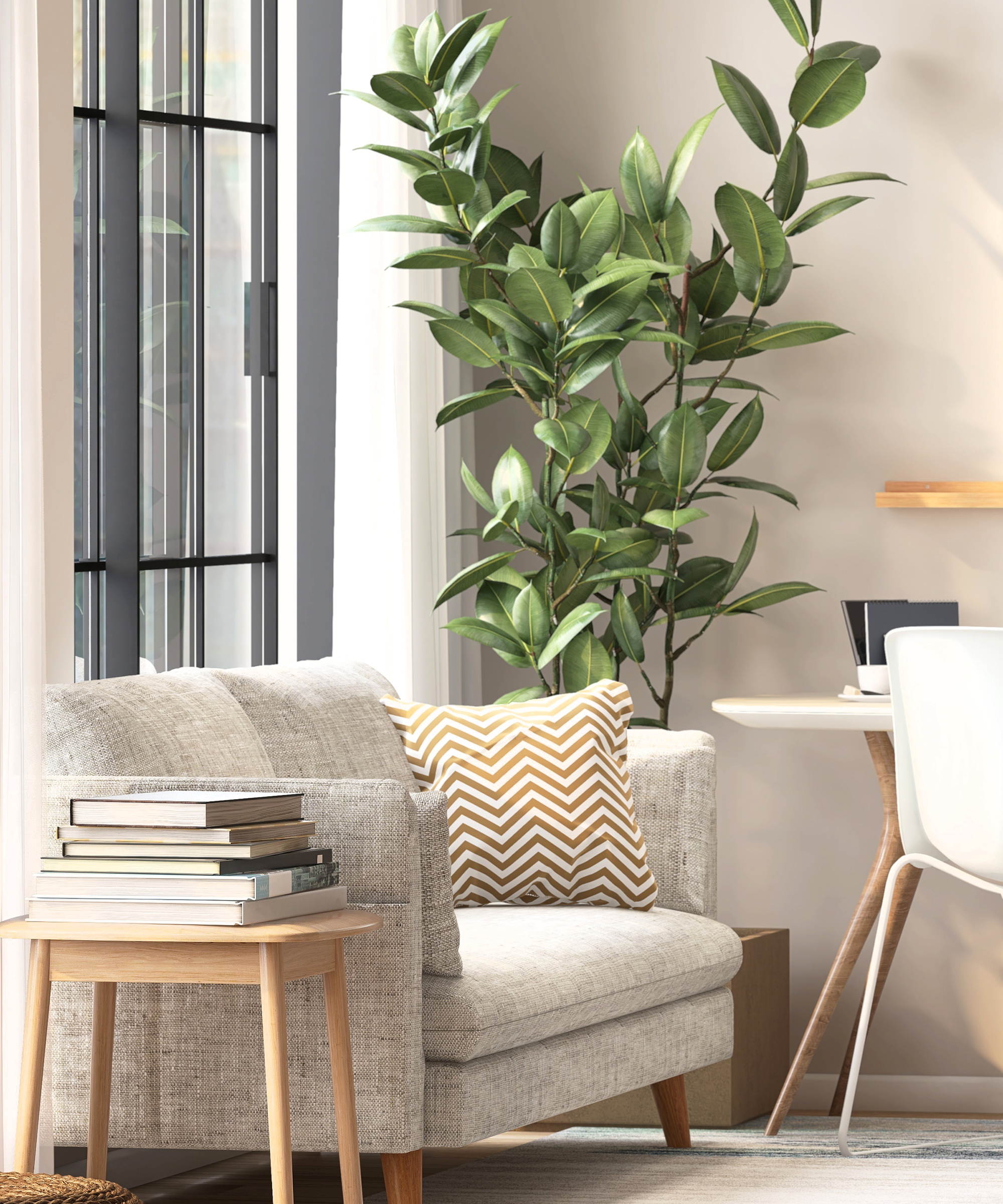
Rubber plants grow fast, much more quickly than most other houseplants, except perhaps spider plants that is.
Because of their vigorous growth rate, yours will eventually need upgrading to a larger pot. If your plant gets too root bound in its current pot, it won't be able to take up water and nutrients so easily, which will result in an underperforming plant that doesn't have room to thrive.
The guidance on when to repot very much depends on your individual plant's growth rate. They generally max out at around 10ft. As yours grows taller and wider, it will need a larger pot in proportion to its size.
Your plant can be repotted in late winter, spring or early summer, with the general rule being that the colder your climate, the later in the season you will need to repot it for best results.
6. Prune to encourage growth
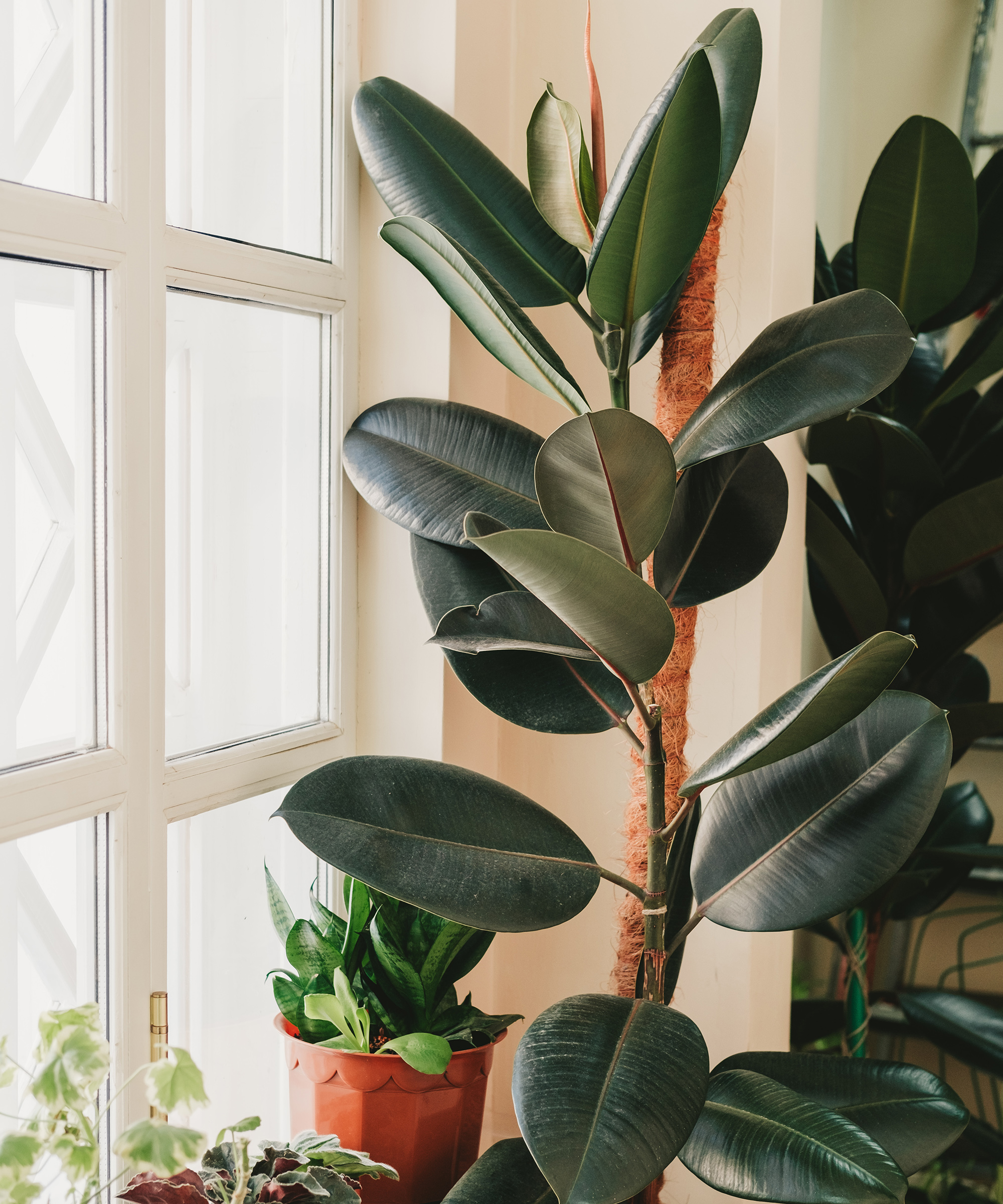
Sometimes rubber plants become leggy, so you need to tidy them up. When it comes to pruning try to do this in late winter, so any cut marks will be hidden by a new flush of spring growth.
The stems of rubber plants leak white sap when cut which eventually turns black when exposed to oxygen, so the stems can end up looking a little messy unless disguised by foliage.
Pruning will encourage new growth and help your plant to eventually become more bushy.
FAQs
Why is the rubber plant so popular?
'Rubber plants have always been in favor as indoor plants, but this popularity is only growing,' says Teresa Conway, deputy gardens editor at Homes & Gardens.
'Given their fast-growth pace, low maintenance nature it's easy to see why. But overall it's the shiny leaves for me,' says Teresa.
Everyone loves a large statement piece and this tropical plant is visually striking so perfectly placed to be the star of Instagram feeds. They really are showstoppers, especially when glimpsed through doorways into rooms.
What houseplants will grow well next to a rubber plant?
As well finding a spot with bright, indirect light, your rubber plant will benefit from growing alongside other houseplants as it will help to create the humid environment that they love. So gather your houseplants together and give your rubber plant some friends to hang out with.
Choose other indoor plants in the same family such as fiddle leaf figs that like the same conditions, as well such as orchids that also like to be misted in hot, dry weather as a way of cooling them down.
Looks-wise, style up your rubber plants with aloe too which also has lovely waxy leaves.
Why is the rubber plant considered lucky?
It's one of the seven lucky plants (the list includes another one of our favorites, the snake plant) that are thought to bring good karma to your home.
Feng Shui experts believe that the round leaves are symbolic of money, prosperity and fortune.
Bringing home a rubber plant is a quick way to dial up the positive vibes then, as well as adding something that's so aesthetically pleasing (as long as you follow our rubber plant care tips that is) that you will just want to keep snapping shots of its beauteous leaves to show off.
Rubber plants are fast-growing and low maintenance. Not to mention their glossy green leaves command attention.
Other statement indoor plants renowned for their bold foliage are bird of paradise.







